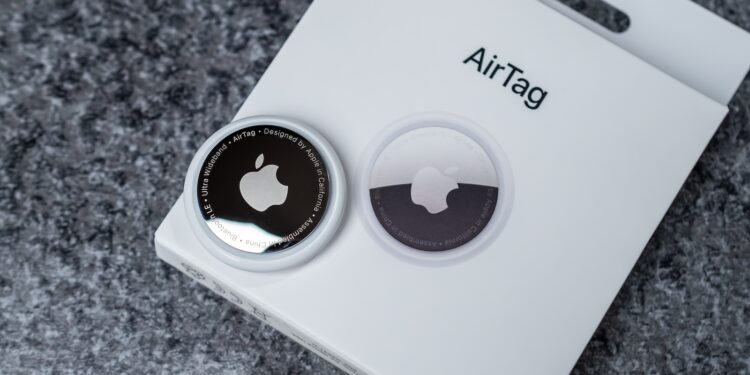AirTags help you quickly find items, whether it's keys, wallet, backpack, or bike. To truly use Apple's small trackers effectively and reliably, you need more than just the basic setup. It's all about using features like Lost Mode, Zone Notifications, and Precision Finding correctly. This article shows you all the important steps and tips for using your AirTag efficiently – no prior technical knowledge required.
Apple AirTags are compact Bluetooth trackers that integrate into your Apple ecosystem. They use the U1 chip (available on iPhone 11 and later) for precise location tracking using Ultra Wideband technology. Combined with the Find My app, you can locate them to within centimeters. At the same time, encryption and privacy features ensure your personal data remains secure. However, many users aren't using their AirTags to their full potential. With the following seven tips, you can make the most of all their important features and make your daily life easier.
Attach AirTag correctly to the object
The position of your AirTag directly affects the connection quality. Place it as centrally as possible on the object you want to track—for example, on the zipper pull of your backpack, in a keychain, or in an inside pocket. This will keep the Bluetooth connection stable and allow the tracking function to work more reliably. Metal casings or deeply hidden locations can block the signal and should be avoided.
Activate Lost Mode if something is missing
As soon as you lose something, you should activate Lost Mode in the Find My app. Select the AirTag in question, enter a phone number or email address, and leave a short message. Anyone who touches the AirTag with an NFC-enabled smartphone will see this information and be able to contact you. This increases the chances of recovering lost items—especially on public transport or while traveling.
Set zone notifications for safe places
In the Find My app, you can mark certain locations as "safe," such as your home or office. If you leave that location without a specific AirTag with you, you'll receive an automatic push notification. This feature is especially useful for items you use every day, like your wallet or laptop. You'll be reminded if you leave the house and forget something important.
Use Precision Finding with U1 chip
If you have an iPhone 11 or newer, you can use Precision Finding. This feature shows you the location of your AirTag with directional arrows and precise distance information on the screen. It's accurate to within a few centimeters—ideal if you've misplaced your keys or the tracker is lying somewhere between sofa cushions. The prerequisite is that the AirTag is within Bluetooth range.
Share location with others
You can share the location of an AirTag with other people, for example, via Family Sharing. This allows all authorized users to see the AirTag's location in their own "Find My" app. This is especially useful for shared items like a car, bag, or suitcase while traveling. Even if it's lost, not only you but also a member of your family or friends can help you find it.
Keep an eye on the battery level
An AirTag uses a CR2032 coin cell battery , which typically lasts about a year. You won't see a specific battery status in the Find My app, but as soon as the "Low Battery" warning appears, you should replace the battery. This will also be displayed within the app. This ensures that the AirTag will still work in an emergency and that your tracking won't suddenly stop.
Control data protection and location access
AirTags regularly transmit encrypted Bluetooth signals, which are received and forwarded anonymously by devices on the Apple network. Apple emphasizes that this cannot reveal your identity. Nevertheless, you should carefully review your location sharing settings in your iOS settings. Under Settings > Privacy & Security > Location Services, you can specify that your location is only accessed when the app is actively in use. This further increases your control over your privacy.
How to make the most of AirTag
With proper use, you'll get the most out of your AirTag. Whether you're finding forgotten items faster, avoiding lost items, or tracking them together with others—the features are diverse. Take a few minutes to optimize the settings. This will turn your AirTag into a reliable tool for more organization and security in your everyday life. The best products for you: Our Amazon Storefront offers a wide selection of accessories, including those for HomeKit. (Image: Shutterstock / BadPixma)
- iOS 26: Capture reminders faster and easier
- macOS: How to copy file and app icons in seconds
- Photos app: Easily stop endless video loops
- Secure your iPhone properly: 5 important functions at a glance
- How to use Spotlight in macOS Sequoia without AI search
- Safari: Copy links to selected text – here's how
- iPhone Files app: 6 tips for more order and efficiency
- How to back up your photo library in macOS Sequoia
- iPhone & Co.: How to deactivate the advanced visual search
- Extend iPhone battery life: These 7 tips help immediately
- Using iPhone Live Text – The best tips for on the go
- Make the most of iPhone screen time – 7 effective tips
- Optimize iPhone battery health: 7 tips to save battery life
- Extend iPhone battery life: These 7 tips help immediately
- Using iPhone Accessibility Features: 7 Features at a Glance
- Apple Intelligence: From which iPhone is it available?
- iPhone & Co.: How to deactivate the advanced visual search
- Extend iPhone battery life: These 7 tips help immediately
- Editing iPhone RAW photos – 8 simple pro tips
- iPhone & Co.: How to deactivate the advanced visual search
- Extend iPhone battery life: These 7 tips help immediately
- Apple Music in iOS 26: Music Pins make access easier
- Setting up iPhone widgets: These 6 tricks you need to know
- Set up Apple Pay on your iPhone – quickly and securely
- Why an iPhone? These advantages are convincing in the long term
- Secure your iPhone properly: 5 important functions at a glance
- Save iPhone battery: When is power saving mode worth it?
- Use Apple Wallet safely, conveniently, and efficiently – 7 tips
- LG or Samsung Smart TV? How to disable tracking
- iPhone & Co.: How to deactivate the advanced visual search
- Extend iPhone battery life: These 7 tips help immediately
Frequently asked questions about Apple AirTags
Hold the AirTag near your iPhone. A setup window will automatically appear on the screen. Follow the instructions to name the AirTag and associate it with an object.
Place it as centrally as possible on the object—e.g., on the zipper pull of a backpack or in a keychain. Avoid deeply hidden places or metal casings, as these can weaken the signal.
Activate Lost Mode in the Find My app. You can add a message with contact information that will be visible when someone scans the AirTag with an NFC-enabled smartphone.
You can mark certain locations, like your home or office, as "safe places." If you leave another location without your AirTag with you, you'll receive a push notification.
No. Precision Finding requires the U1 chip, available starting with iPhone 11. This allows you to find the exact location of your AirTag with directional arrows and distance information.
Yes. You can share your location with others via Family Sharing or directly in the Find My app. This is useful for shared items like a car or suitcase.
An AirTag uses a CR2032 coin cell battery that lasts about a year. When the battery is low, the app displays a warning. You should then replace the battery.
Apple has built in protective mechanisms. If a third-party AirTag is detected in your vicinity for an extended period, you'll receive a warning message on your iPhone. The AirTag will also alert you with a beep after a while.
AirTags send encrypted signals that are relayed anonymously across Apple's device network. Apple emphasizes that neither location nor identity data can be traced.
Yes, partially. The AirTag itself uses Bluetooth and Ultra Wideband. However, displaying the location in the app requires a connection via the Apple network, which in turn requires internet access on your iPhone.





